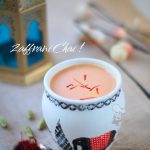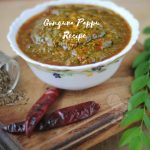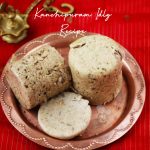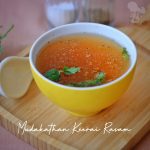Dwell In the flavors of this enchanting delicacy 'senagapappu modak" that features the most dilly chewy stuffing, that is comforting and soul satisfying...Just try your hands on making such rejuvenating recipes that always come with fond memories...
Index:
Topics That May Engage And Enchant You:
1. Senaga Pappu modak
2. An Outlook On Andhra's Classy Cuisine
3. Andhra Pradesh's Sweet Delights And Delicacies: A Preview
4. An Introduction On Senagapappu Modak
5. The Origin, History And Popularity Of Senaga Pappu Modak
6. Needed Ingredients To Make Senagapappu Modak Recipe
7. Step wise Directions To Make Senagapappu Modak In Its Original Form
8. Tips And Tricks To Make The Best Senagapappu Modak Recipe
9. Faqs
10. Senagapappu Modak In A Nutshell
11. Tantalizing Toppings For Senagapappu Modak
12. Blasting Beverages For Senagapappu Modak
13. Fantastic Fixings For Senagapappu Modak
14. Ambience Ideas
15. Reminiscing A Day From Our Ancestor's Life: Food Of Love
16. The Takeaway
17. Nutritional Value
Senaka Pappu Modak is a traditional Indian sweet made during festivals especially the Ganesh Chaturthi. It is a South Indian variation of the classic modak, which is typically made with rice flour dough and a sweet coconut and jaggery filling. Senaka Pappu Modak is made using chana dal (split chickpeas) for the outer covering and a coconut-jaggery filling.
An Outlook On Andhra's Classy Cuisine:
Andhra Pradesh's primitive cuisine, deeply rooted in tradition and local ingredients, reflects the rich cultural heritage of this southern Indian state. Characterized by a perfect balance of flavors, it is known for its fiery spiciness and bold use of chilies, tamarind, and aromatic spices.
The cuisine predominantly features rice as a staple, and dishes like spicy Andhra-style biryani, tangy tamarind-based gravies, and a wide array of pickles and chutneys are its hallmarks. Andhra's primitive cuisine also boasts an extensive vegetarian and non-vegetarian menu, with dishes like the iconic Andhra chicken curry, spicy fish preparations, and delectable lentil-based dishes. This cuisine's unique flavors and techniques have stood the test of time, making it a celebrated part of India's culinary landscape.
Andhra Pradesh's Sweet Delights And Delicacies: A Preview
A study on the nature of Andhra's sweets and delicacies reveals a diverse and intriguing culinary landscape. Andhra Pradesh, in southern India, is renowned for its unique approach to desserts and savories. Sweets like "Ariselu" (rice and jaggery sweets), "Bobbatlu" (sweet stuffed flatbreads), and "Pootharekulu" (wafer-thin rice starch rolls filled with jaggery and ghee) showcase the state's penchant for combining contrasting textures and flavors.
The generous use of regional ingredients such as sesame seeds, groundnuts, coconut, and jaggery infuses these treats with a distinctive taste. Additionally, Andhra cuisine's famous spiciness finds its way into sweets as well, with creations like "Bellam Gavvalu" (jaggery-coated fried pastries) offering a sweet-spicy contrast. This diverse range of sweets and delicacies reflects the region's cultural diversity and culinary ingenuity, making it a fascinating subject of study for food enthusiasts and researchers alike.
An Introduction On Senagapappu Modak:
Senaga Pappu Modak is a delightful and innovative variation of the traditional Indian sweet, the modak. Unlike the classic modak, which is primarily made with rice flour dough and filled with sweet coconut and jaggery, Senaga Pappu Modak hails from the southern Indian state of Andhra Pradesh and features a unique twist. The outer covering of these modaks is crafted from chana dal, a type of split chickpea, creating a distinctive texture and flavor profile. The filling, however, typically remains true to the traditional modak, with a sweet blend of grated coconut, jaggery, and aromatic spices. This regional variation offers a delightful fusion of flavors and textures, showcasing the diversity and creativity found in India's vast and intricate culinary traditions. Senaga Pappu Modak is often prepared during festivals and special occasions, adding a touch of Andhra's culinary charm to the celebration.
The Origin, History And Popularity Of Senaga Pappu Modak:
Senaga Pappu Modak is a unique and regional variation of the traditional modak that is popular in the southern Indian state of Andhra Pradesh. To understand its origin, history, and popularity, let's delve into its background:
Origin and History: The exact origin of Senaga Pappu Modak is deeply rooted in the culinary traditions of Andhra Pradesh. Modaks, in general, have a long history in India and are closely associated with Hindu festivals, particularly Ganesh Chaturthi, when Lord Ganesha is honored as the deity of wisdom and new beginnings. Modaks are considered Lord Ganesha's favorite treat, and various regions across India have developed their own versions of this sweet to celebrate the festival.
Key Features: Senaga Pappu Modak stands out due to its unique use of chana dal (split chickpeas) for the outer covering instead of the more common rice flour dough. Chana dal is a staple ingredient in Andhra cuisine, and its inclusion in this modak recipe adds a distinct texture and flavor to the dish. The filling, which includes grated coconut, jaggery, and spices, remains consistent with the traditional modak.
Popularity:
Senaga Pappu Modak is particularly popular in Andhra Pradesh, where it is prepared and enjoyed during festivals, especially Ganesh Chaturthi. It is cherished not only for its delicious taste but also for its representation of the region's culinary diversity. This variation showcases the skill and creativity of Andhra cooks, who have adapted a traditional recipe to incorporate local ingredients and flavors.
The popularity of Senaga Pappu Modak extends beyond religious festivals and is often prepared for other special occasions and family gatherings. Its unique taste and distinctive appearance make it a favorite among those who appreciate the rich tapestry of Indian sweets.
In summary, Senaga Pappu Modak is a delightful regional twist on the traditional modak, originating from Andhra Pradesh. Its history is intertwined with the broader tradition of modaks in India, and its unique combination of chana dal and traditional filling ingredients has earned it popularity both within the region and among those who appreciate the diverse and intricate flavors of Indian cuisine.
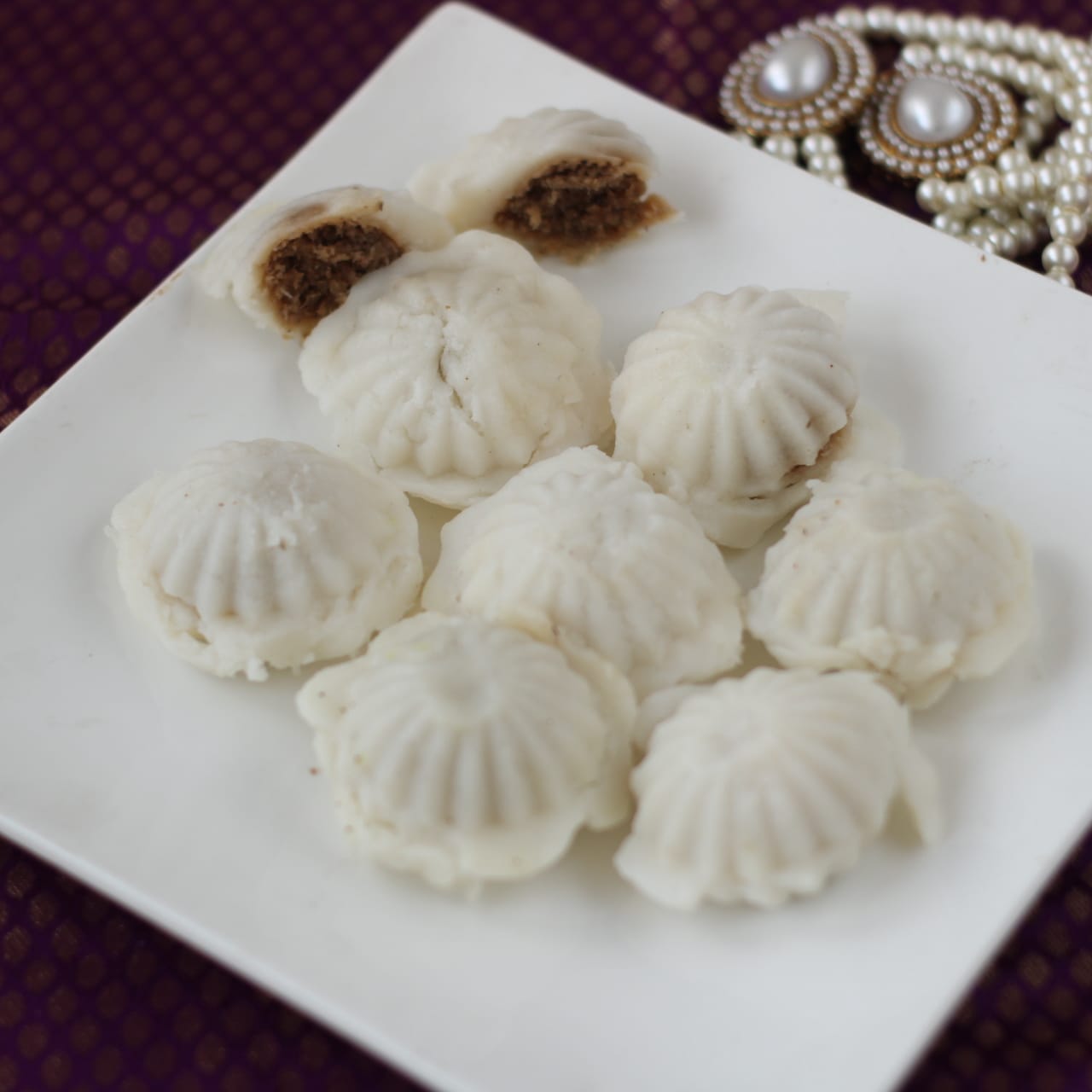
Needed Ingredients To Make Senagapappu Modak Recipe:
Step wise Directions To Make Senagapappu Modak In Its Original Form:
Boil chana dal in a pressure cooker for four to five whistles in a pressure cooker and allow it to cool. Transfer it to a tea filter and drain the water. Then add the measured quantity of jaggery, coconut, cardamom powder and a pinch of salt. Add everything to a blender and blitz for one pulse or two and make a coarse paste out of it. Make even sized tiny balls and keep aside.
Add a cup of rice flour to a bowl and sprinkle a pinch of salt and gradually pour in a cup of hot water while stirring gently on one hand. Knead it smooth enough to feel spongy.
Use any mould which you get in store in any shape, and grease it with a little oil and fill it up with the rice dough on both the sides. Stuff a teaspoon of pooran inside and lock it. Open after a second and take the modak out and place it in a plate and keep aside. Similarly, prepare all the modak and place it inside a steamer.
Steam the senaka pappu modak for seven to ten minutes approximately in medium flame. When the aroma starts wafting out from the steamer, just turn off the flame and take out the lid.
Place it in a plantain leaf and serve it with a sizzling cup of aromatic filter coffee.
Tips And Tricks To Make The Best Senagapappu Modak Recipe:
1. Soak the Chana Dal: Start by rinsing and soaking the chana dal (split chickpeas) for a few hours or overnight. This will help soften the dal, making it easier to cook to the right consistency.
2. Cook the Chana Dal Perfectly: When cooking the chana dal, it's essential to ensure that it's soft but not mushy. Overcooking can lead to a sticky and difficult-to-work-with dough. Use a pressure cooker for efficiency and be cautious with the cooking time.
3. Optimal Grinding: After draining the cooked chana dal, grind it into a smooth, yet slightly coarse paste. Avoid adding water while grinding; if necessary, add just a few drops to facilitate the process. The texture of the dal paste should allow you to shape it without it being too sticky.
4. Prepare the Filling with Care: The filling is a critical component of Senaga Pappu Modak. Ensure that the jaggery is powdered finely to prevent graininess in the filling. Roast the coconut until it turns a light golden color, but be careful not to overdo it, as this can make it dry.
5. Balancing Flavors: Achieving the right balance of sweetness and spiciness is key. Adjust the amount of jaggery and cardamom powder in the filling to your taste. Some variations also include a pinch of salt to balance the flavors.
Use Modak Moulds (Optional): While shaping the modaks by hand is traditional, using modak moulds can help you achieve consistent and attractive shapes. Grease the moulds lightly with ghee or oil to prevent sticking.
7. Practice Patience: Shaping the modaks can be a bit tricky, especially if you're new to it. Take your time and don't rush the process. Keep your hands and mould (if using) slightly greased to prevent sticking.
8. Offer Decorative Touches: If you're feeling creative, consider adding garnishes like saffron strands or chopped nuts to enhance the visual appeal of your Senaga Pappu Modak.
9. Steam to Perfection: When steaming the modaks, ensure that the water is boiling gently, and the modaks are arranged on a greased surface or in a banana leaf to prevent sticking. Steam them until they are cooked through but still firm.
10. Serve Fresh: Senaga Pappu Modak is best enjoyed fresh, either warm or at room temperature. Store any leftovers in an airtight container.
With these tips and tricks, you can create delicious and visually appealing Senaga Pappu Modak to savor and share during special occasions and festivals.
Faqs:
1. Can I make Senaga Pappu Modak in advance?
- Yes, you can prepare Senaga Pappu Modak in advance, but it's best enjoyed fresh. Store any leftovers in an airtight container at room temperature for a day or two.
2. Are there any variations of Senaga Pappu Modak?
- While the basic recipe includes chana dal, coconut, jaggery, and spices, some variations might include additional ingredients like nuts or raisins for added flavor and texture.
3. Can Senaga Pappu Modak be made gluten-free?
- Yes, Senaga Pappu Modak can be made gluten-free as chana dal is naturally gluten-free. However, ensure that all other ingredients you use are also gluten-free to maintain the gluten-free status of the dish.
4. Can I make Senaga Pappu Modak without a pressure cooker?
- Yes, you can cook the chana dal in a regular pot if you don't have a pressure cooker. It may take a bit longer to cook, so monitor it closely to achieve the desired softness without overcooking.
5. Can I make Senaga Pappu Modak vegan?
- Yes, Senaga Pappu Modak can be made vegan by substituting ghee with a plant-based oil or vegan butter for greasing and ensuring that the jaggery used is vegan-friendly.
Senagapappu Modak In A Nutshell:
- Nature: Senagapappu modak is a traditional Indian sweet dumpling made from roasted chana dal (split chickpeas) and jaggery, shaped into a conical form.
- Color: These modaks typically exhibit a warm golden-brown hue, owing to the roasted chana dal and jaggery.
- Texture: Senagapappu modak has a grainy and slightly coarse texture due to the crushed chana dal, providing a delightful crunch.
- Consistency: The consistency is crumbly on the outside and soft and slightly gooey on the inside, offering a pleasing contrast.
- Flavor: It boasts a sweet and nutty flavor, with the richness of roasted chana dal complemented by the sweetness of jaggery.
- Smell: The aroma is a mix of the earthy scent of roasted lentils and the sweet, caramel-like fragrance of jaggery.
- Taste: Senagapappu modak delivers a delightful combination of sweetness and nuttiness, making it a delectable treat for those with a sweet tooth.
Tantalizing Toppings For Senagapappu Modak: (optional)
Ghee: Drizzling a little warm ghee (clarified butter) over the modak can add a luxurious and rich flavor to each bite.
Saffron Strands: A few strands of saffron can lend a vibrant color and a subtle floral aroma to the modak.
Cardamom Powder: Lightly dust the modak with a pinch of ground cardamom for an extra burst of fragrance and flavor.
Desiccated Coconut: Sprinkle a bit of desiccated coconut over the modak to enhance its coconutty undertones and add a contrasting texture.
Crushed Jaggery: Grate or crush a small amount of jaggery and sprinkle it on top of the modak to reinforce its sweet taste.
These are some of the creative ideas to top up the senagapappu modak.
Blasting Beverages For Senagapappu Modak:
Cardamom Tea: A cup of fragrant cardamom tea can be a perfect beverage to enjoy alongside senagapappu modak, as it complements the sweet and aromatic flavors.
Badam Milk: Warm or cold badam milk is a classic choice to pair with any sweet Indian treat. It can enhance the sweetness and provide a refreshing completion.
- Filter Coffee: A hot cup of aromatic filter coffee would elevate the taste of any modak like senagapappu to the next level.
Fantastic Fixings For Senagapappu Modak:
Samosas: Crispy and savory samosas filled with spiced potatoes or a mixture of lentils and spices are a popular choice to serve with sweet treats.
Bhajias (Fritters): A platter of assorted bhajias such as onion bhajia, potato bhajia, or spinach pakoras can add a satisfying crunch and spice to your modak spread.
Pakoras: Vegetable pakoras or paneer pakoras (deep-fried fritters) are a crowd-pleasing option that pairs well with the sweet modak.
Masala Peanuts: Spiced and roasted peanuts or masala peanuts can offer a savory and crunchy contrast to the modak's sweetness.
Ambience Ideas:
To create a simple and enjoyable ambience for savoring Senagapappu modak, consider arranging a cozy setting with soft lighting. Place a decorative cloth or mat on the table and set out a few traditional Indian brass or ceramic plates to serve the modak. Add a touch of elegance with some fresh flower petals scattered around the plates. Play soft instrumental music in the background to set a relaxed mood. Light scented candles or incense for a subtle fragrance that enhances the sensory experience. Finally, invite friends or family to join you in this delightful treat, encouraging conversation and laughter while relishing the sweet modak and creating cherished memories together.
Reminiscing A Day From Our Ancestor's Life: Food Of Love
Just Imagining how our Andhra elders would have made and enjoyed Senagapappu modak is a beautiful glimpse into tradition and nostalgia. Picture a serene kitchen filled with the comforting aroma of roasting chana dal. The elders, with years of culinary wisdom, would have meticulously hand-roasted the split chickpeas, creating a rich, nutty fragrance that filled the air.
Their hands, weathered by time, expertly shaped the modak, ensuring each one was perfect in form. Jaggery, sourced locally, would have been melted down to the perfect consistency, providing the right amount of sweetness to the modak mixture. With great care, they would have filled the roasted chickpea dough with the jaggery mixture, sealing it with the love and precision that only comes from generations of tradition.
As the modak were placed on a simple brass plate, the elders would have created a warm and inviting atmosphere. The modak would be offered as a symbol of love and tradition, to be enjoyed with their loved ones. Sitting together, they'd share stories of days gone by, passing on not only the recipe but the cherished memories that come with it. Each bite would be a taste of nostalgia, a connection to the past, and a reminder of the enduring bond of family and culture. In this simple act of making and enjoying Senagapappu modak, the elders would have imparted a legacy that transcends generations, keeping traditions alive and hearts connected.
The Takeaway:
Ancient recipes like Senagapappu modak marks the profound connection between food, tradition, and family. It illustrates how culinary traditions are passed down through generations, carrying with them the flavors of the past and the love of our elders. It emphasizes the importance of preserving these traditions as a way of preserving our cultural heritage and connecting with our roots.
Moreover, it highlights the significance of food not just as sustenance but as a means of creating cherished memories and fostering bonds between generations. Senagapappu modak, in this context, becomes more than just a sweet treat; it becomes a symbol of love, togetherness, and the timeless wisdom of our elders.
The takeaway encourages us to value and embrace our cultural and culinary heritage, to pass it on to the next generation, and to savor the flavors of tradition while creating new memories with our loved ones through food.
Happy Cooking!
Ingredients
Directions
Boil chana dal in a pressure cooker for four to five whistles in a pressure cooker and allow it to cool. Transfer it to a tea filter and drain the water. Then add the measured quantity of jaggery, coconut, cardamom powder and a pinch of salt. Add everything to a blender and blitz for one pulse or two and make a coarse paste out of it. Make even sized tiny balls and keep aside.
Add a cup of rice flour to a bowl and sprinkle a pinch of salt and gradually pour in a cup of hot water while stirring gently on one hand. Knead it smooth enough to feel spongy.
Use any mould which you get in store in any shape, and grease it with a little oil and fill it up with the rice dough on both the sides. Stuff a teaspoon of pooran inside and lock it. Open after a second and take the modak out and place it in a plate and keep aside. Similarly, prepare all the modak and place it inside a steamer.
Steam the senaka pappu modak for seven to ten minutes approximately in medium flame. When the aroma starts wafting out from the steamer, just turn off the flame and take out the lid.
Place it in a plantain leaf and serve it with a sizzling cup of aromatic filter coffee.

